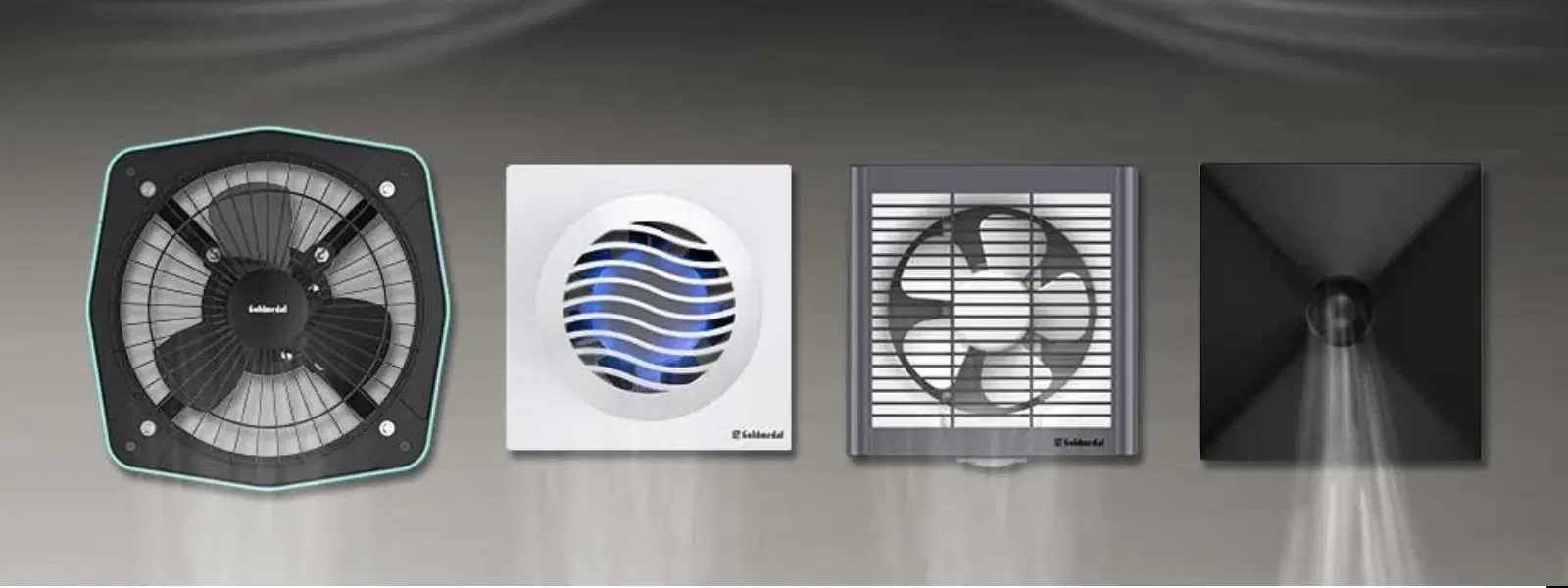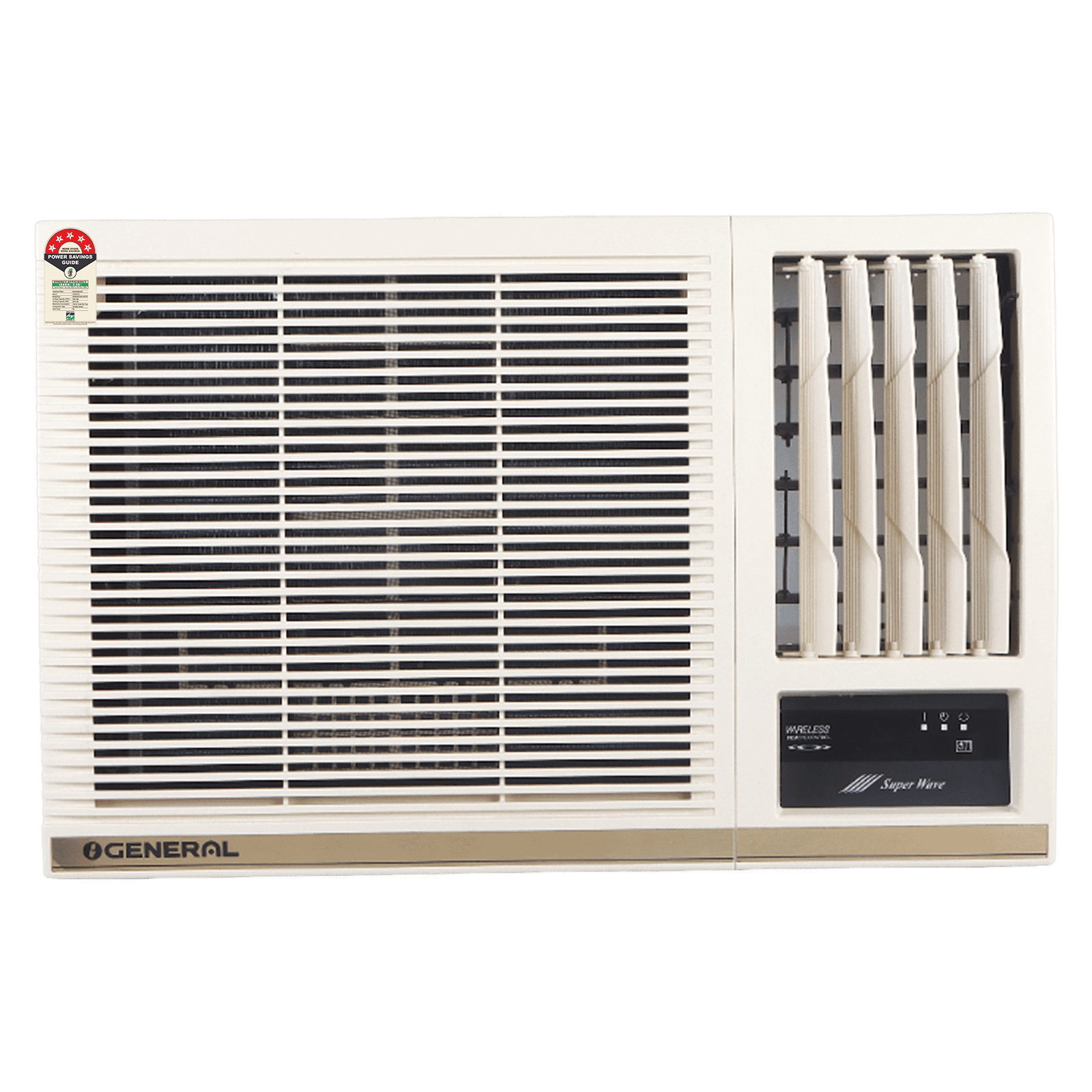
Home Appliances
•04 min read

Buy Crompton Mountair New 6 Inch 150mm Exhaust Fan (Silent Operation, Wooden) online at best prices from Croma. Check product details, reviews & more. Shop now!
Ventilation is a critical aspect of maintaining a comfortable and healthy indoor environment, yet choosing between a window exhaust fan and a wall-mounted fan can be challenging. In this post, we explore the key differences between these two popular ventilation solutions so that homeowners and renters alike can make an informed decision for improved air circulation, energy efficiency, and overall comfort.
A window exhaust fan is designed to be installed directly into a window frame, making it ideal for expelling stale air while drawing in fresh air. Often found in kitchens, bathrooms, and other compact spaces, these fans are celebrated for their quiet operation and energy-efficient motors. Whether you are looking for a kitchen exhaust fan or a bathroom ventilation fan, the window exhaust fan offers reversible airflow options that cater to various environmental needs. Its compact design ensures it can serve as a home exhaust fan where space is limited yet optimal performance remains a priority.
In contrast, wall-mounted fans are fixed onto walls and focus primarily on circulating air within a room. They are common in larger spaces such as living rooms, offices, and bedrooms where constant air circulation helps maintain a fresh indoor environment. With adjustable angles and a high airflow capacity, the wall-mounted fan acts as an effective air circulation fan, especially when integrated with an indoor ventilation system. Although these fans do not expel air outside like a window exhaust fan, their design supports continuous movement for overall comfort.
Window exhaust fans are designed for easy installation provided a compatible window frame is available. The setup can be both temporary or permanent, which is especially beneficial for spaces where wall installations may not be feasible. The simplicity of installation means that you can benefit from improved home air quality quickly, making these fans an energy-efficient option for seasonal use and compact living areas.
Installing a wall-mounted fan requires a more permanent set-up because it typically involves drilling into the wall and securing mounting brackets. This ensures stability over time and makes them ideal for rooms without accessible windows. Although the installation is more involved, the long-term durability and consistent performance make wall-mounted fans an attractive choice for continuous air circulation and supplemental cooling.

Buy O GENERAL 1.5 Ton 5 Star Window AC (2023 Model, Copper Condenser, Anti Bacterial Filter, AXGB18CHAA-B) online at best prices from Croma. Check product details, reviews & more. Shop now!
When considering performance, the airflow direction plays a crucial role. A window exhaust fan excels in expelling stale air from areas prone to moisture and odors, which makes it the perfect choice for a kitchen exhaust fan or bathroom ventilation fan. It efficiently pulls in fresh air, thereby helping maintain a balanced indoor environment. On the other hand, a wall-mounted fan focuses on moving air within the room, making it an excellent option when the priority is overall air circulation rather than external ventilation.
Energy efficiency and noise level are key considerations for any ventilation fan. The window exhaust fan typically features an energy-efficient motor design that helps in reducing power consumption while running quietly. This quiet exhaust fan performance is especially appreciated in spaces where minimal disruption is essential. While wall-mounted fans may sometimes produce a higher noise level at maximum speeds, they are engineered to be efficient for long-term use, thus providing a balanced solution for daily air circulation needs.
For areas prone to moisture buildup, such as kitchens and bathrooms, the window exhaust fan proves invaluable. Its design efficiently combats indoor pollutants and excess humidity. These fans are also a cost-effective choice for those who prefer a temporary or seasonal solution without the long-term commitment of wall installation. With energy-efficient exhaust fan options widely available, users can enjoy improved home air quality while keeping operational costs low.
If your living space is larger or if windows are not conveniently accessible, a wall-mounted fan is likely the better option. Its robust design supports continuous air circulation in places like living rooms, offices, or bedrooms. Additionally, if you already utilise air conditioning, the wall-mounted fan can act as a supplemental air circulation fan, enhancing the cooling effect and maintaining a comfortable atmosphere throughout the day.
Did You Know?
A well-installed window exhaust fan can significantly reduce indoor pollutants in kitchens and bathrooms, thus preventing moisture buildup and the accumulation of odours. This makes them an excellent choice for targeted ventilation in compact spaces.

Buy Lloyd 1 Ton 3 Star Window AC (2023 Model, Copper Condenser, GLW12C3XWSEW) online at best prices from Croma. Check product details, reviews & more. Shop now!
The window exhaust fan offers a range of advantages that include effective ventilation for small spaces, energy-efficient operation, and ease of installation or removal. However, it does have limitations, particularly in rooms that lack a suitable window setup or in larger spaces where its performance may not meet the demand.
Wall-mounted fans shine in larger rooms with their versatile placement and robust airflow capabilities. They are durable and designed for long-term operation but require a permanent installation, making them less flexible when changes are needed. Additionally, their design does not support expelling stale air to the exterior, which is a key function for reducing indoor humidity and pollutants.
Yes, window exhaust fans are a practical choice for targeted ventilation. They effectively remove moisture and pollutants from spaces like kitchens and bathrooms and come with categories such as energy-efficient exhaust fan options.
Absolutely, these fans are purpose-built to fit standard window frames, allowing for easy installation and efficient ventilation.
A vent fan is designed to circulate air within a room, while an exhaust fan, like a window exhaust fan, works by expelling stale air from indoors and drawing in fresh air, making it particularly effective for areas with moisture and odour issues.
In summary, the choice between a window exhaust fan and a wall-mounted fan largely depends on your specific needs. If you are looking to expel stale air and control moisture in compact spaces such as kitchens or bathrooms, the window exhaust fan is a strong contender. Conversely, for broader indoor air circulation in larger rooms or spaces without accessible windows, a wall-mounted fan is the ideal solution. With an emphasis on energy efficiency, performance, and ease of installation, both options offer valuable benefits tailored to different environmental requirements. By understanding these distinctions, you can choose the fan that best complements your living space while enjoying the perks of rewards with NeuCoins on every purchase. Discover how smart, efficient solutions can elevate your home comfort and make everyday living healthier and more enjoyable.